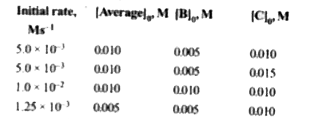The fruit of A group dehisces dorsiventrally, of B group dehisces in different ways, of dehisces into one seeded mericarps. A, B and Care respectively
(A) Pea, Beans (B) Cotton, Coconut (C) Acacia, Anacardium
(A) Pea, beans (B) Cotton, Datura (C) Acacia, Castor
(A) Cotton, Datura, (B) Peas, rice (C) Cotton, Acacia
(A) Cotton, Acacia (B) Peas, Beans (C) Cotton, Aristolochia
The correct Answer is:B
To solve the question, we need to identify the groups A, B, and C based on the dehiscence characteristics of their fruits. Let's break down the information step by step.
1. Understanding Dehiscence:
- Dehiscence refers to the splitting open of a fruit at maturity to release seeds. Different fruits have different methods of dehiscence.
2. Group A - Dorsiventral Dehiscence:
- The fruits in group A dehisce dorsiventrally. This means they split along the dorsal (upper) and ventral (lower) sides.
- Examples: Common examples of fruits that exhibit dorsiventral dehiscence are beans (Phaseolus) and peas (Pisum). These fruits have a marginal placentation where the ovules are attached along the edge of the fruit.
3. Group B - Various Dehiscence Methods:
- The fruits in group B dehisce in different ways. This suggests that the method of seed release varies significantly among these fruits.
- Examples: Cotton (Gossypium) is known for its capsules that burst open to release seeds into the air. Datura (also known as Jimsonweed) has a unique funnel-shaped fruit that also releases seeds in a different manner.
4. Group C - One-seeded Mericarps:
- The fruits in group C dehisce into one-seeded mericarps. This indicates that these fruits are dry and typically contain a single seed.
- Examples: Acacia and castor (Ricinus) produce fruits that are classified as one-seeded mericarps. In these fruits, the pericarp (the fruit wall) does not have distinct layers, and they release only one seed upon maturation.
5. Conclusion:
- Based on the characteristics described:
- Group A corresponds to Peas and Beans (dorsiventral dehiscence).
- Group B corresponds to Cotton and Datura (various dehiscence methods).
- Group C corresponds to Acacia and Castor (one-seeded mericarps).
Thus, the answer to the question is:
- A: Peas and Beans
- B: Cotton and Datura
- C: Acacia and Castor
Final Answer:
- A: Peas and Beans
- B: Cotton and Datura
- C: Acacia and Castor
- Dehiscence refers to the splitting open of a fruit at maturity to release seeds. Different fruits have different methods of dehiscence.
- The fruits in group A dehisce dorsiventrally. This means they split along the dorsal (upper) and ventral (lower) sides.
- Examples: Common examples of fruits that exhibit dorsiventral dehiscence are beans (Phaseolus) and peas (Pisum). These fruits have a marginal placentation where the ovules are attached along the edge of the fruit.
- The fruits in group B dehisce in different ways. This suggests that the method of seed release varies significantly among these fruits.
- Examples: Cotton (Gossypium) is known for its capsules that burst open to release seeds into the air. Datura (also known as Jimsonweed) has a unique funnel-shaped fruit that also releases seeds in a different manner.
- The fruits in group C dehisce into one-seeded mericarps. This indicates that these fruits are dry and typically contain a single seed.
- Examples: Acacia and castor (Ricinus) produce fruits that are classified as one-seeded mericarps. In these fruits, the pericarp (the fruit wall) does not have distinct layers, and they release only one seed upon maturation.
- Based on the characteristics described:
- Group A corresponds to Peas and Beans (dorsiventral dehiscence).
- Group B corresponds to Cotton and Datura (various dehiscence methods).
- Group C corresponds to Acacia and Castor (one-seeded mericarps).
- A: Peas and Beans
- B: Cotton and Datura
- C: Acacia and Castor
- A: Peas and Beans
- B: Cotton and Datura
- C: Acacia and Castor
Similar Questions
Knowledge Check
- Question 1 - Select One
The initial rates ofreaction
3A+2B+C→ Products, at different initial concentrations are given below:

The order with respect to the reactants, A, B and Care respectivelyA3, 2, 0B3, 2, 1C2, 2, 0D2, 1, 0 - Question 2 - Select One
Achenial fruits are simple dry single seeded indehiscednt fruits which do not dehisce after ripening and seeds remain inside the pericarp they may be
I carypsis
II siliqua
III nut
capsule
choose the correct opttionAI and IIBII andIVConly IIIDI and III - Question 3 - Select One
What is possibility of a child with blood group 'O' being born to a mother and father having blood group 'O' and 'B' respectively ?
A0.25B0.5C0.75D1
The total number of ways of dividing 15 different things into groups of 8,4 and 3 respectively is:
View SolutionWhat makes human blood group types A,B,AB or O different ?
View SolutionA boy has the blood group AB. What is true of the inheritance of this blood group in his case ?
(a) His parents should be one with O group and the other with B group.
(b) His father should be with A group and mother with B group.
(c ) His parents should be one with O group and the other with A group.
(d) Both his parents should be with B group.View SolutionWhich one controls dehiscence of sporangium in Dryopteris
View SolutionThe first element of a group in many ways differ from the heavier memebers of group. This is due to
View Solution

